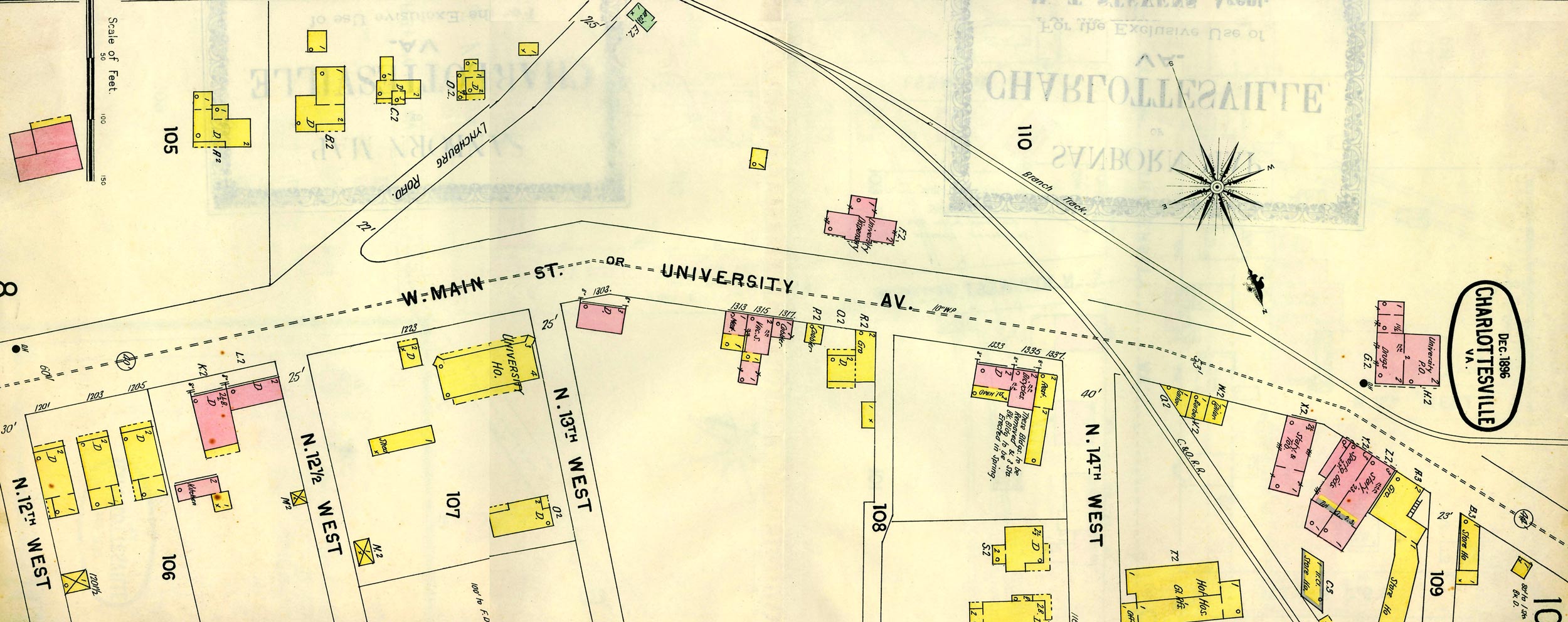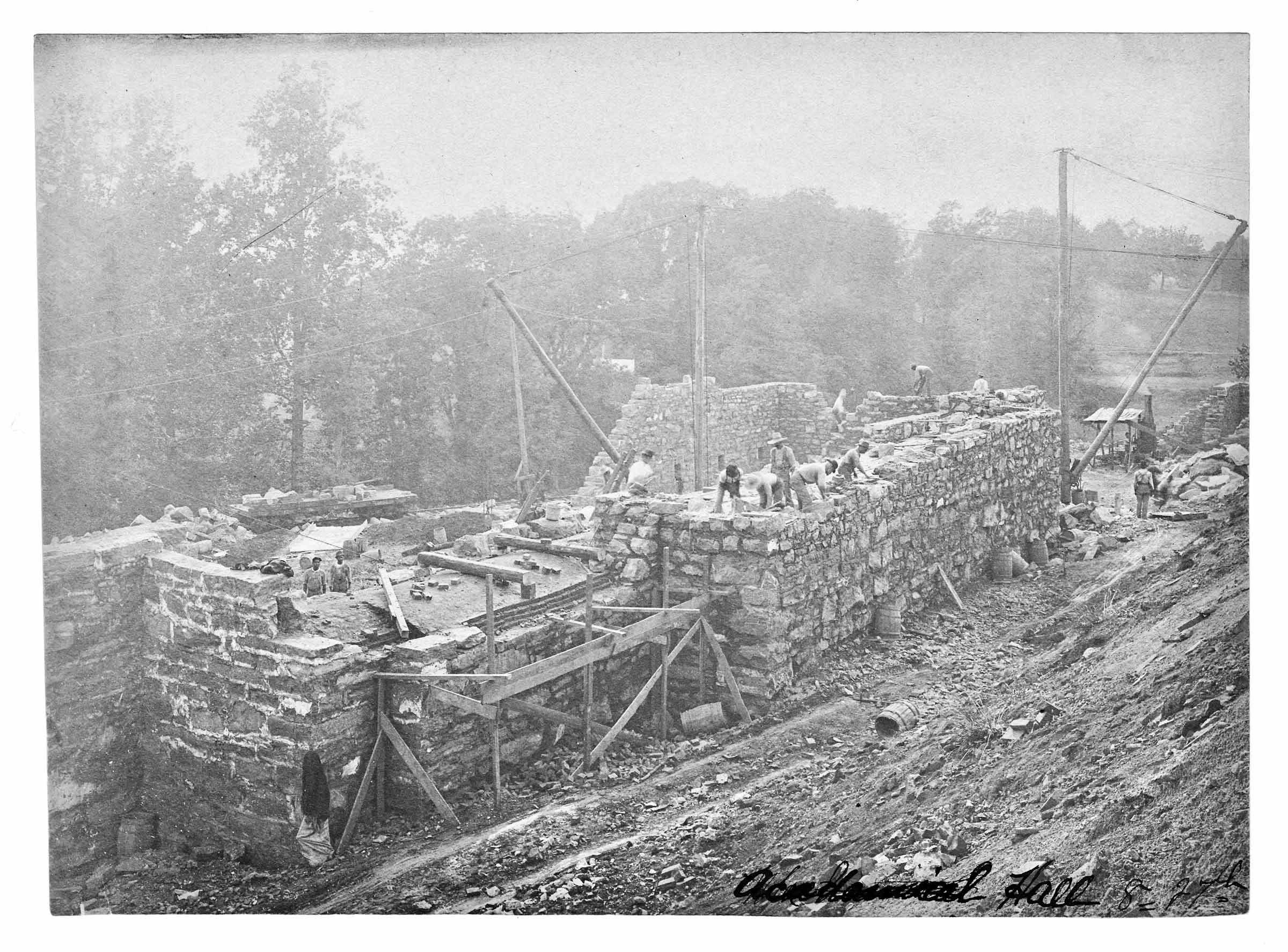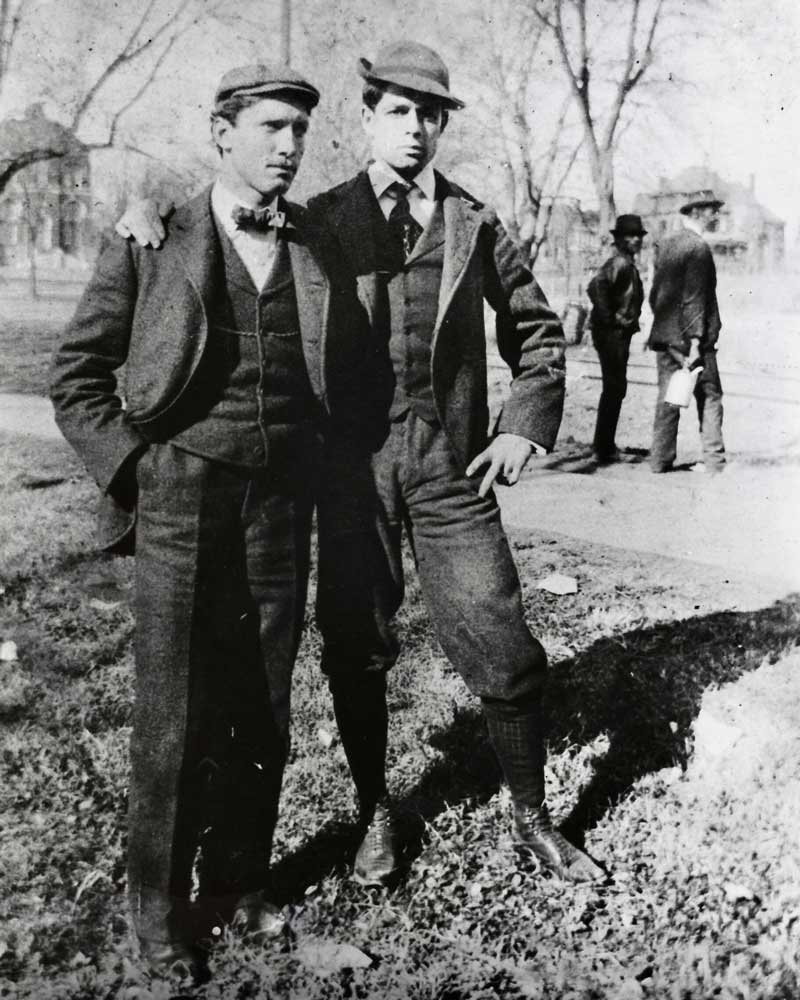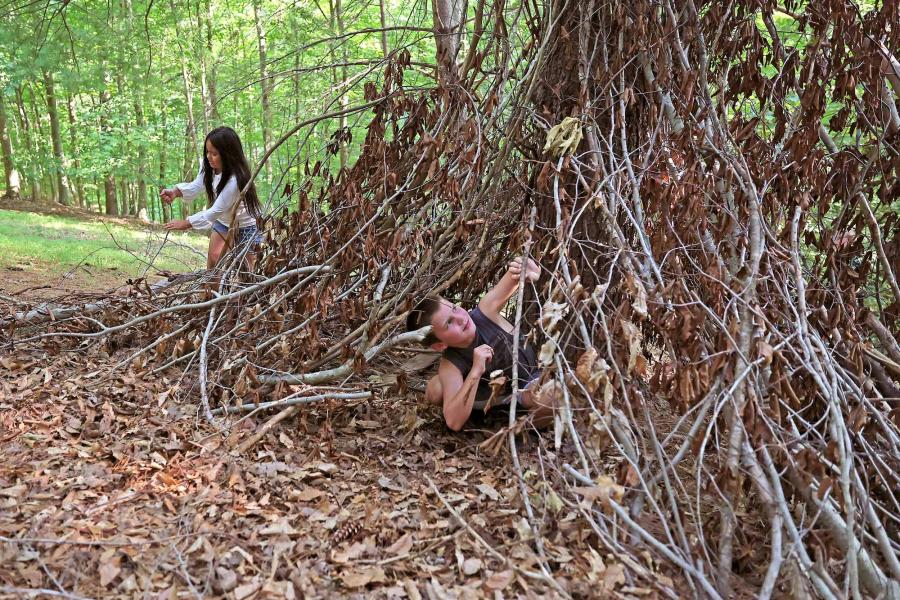Once upon a time, the University of Virginia had its own short-line railway on Grounds.
The temporary track was laid while the University was rebuilding following the 1895 fire that heavily damaged the iconic Rotunda and destroyed its annex. The 1853 annex, which extended north from the the Rotunda toward University Avenue, was a four-story structure that housed classroom, laboratory and meeting/performance space.
After the fire, the Board of Visitors hired the New York architecture firm McKim, Mead & White to restore the Rotunda. Sanford White, a partner in the firm, was tasked with replacing the assets lost in the fire. White's vision was to replace the annex with three new buildings, closing the south end of Thomas Jefferson's Lawn - buildings that became Rouss, Cocke and (Old) Cabell halls.
Construction was a massive undertaking and took about a year and a half to complete, with the new buildings dedicated in June 1898. Installing a short rail line to carry building materials directly to the job site was key to the project's prompt completion.
"Charlottesville didn't have the supplies to build these structures and the Rotunda," UVA Facilities Management historian Garth Anderson said. "The material needed to be brought in by rail, and why deliver it downtown when the railroad ran along the eastern edge of the University? A spur was run a short distance up University Avenue, along the Long Walk and then down what would become Hospital Drive and to the site of the academical building."
The rail line ended in what is roughly now the courtyard between New and Old Cabell halls.

Board of Visitors records indicate the University reached an agreement in early May 1896 with the Chesapeake and Ohio Railroad to "furnish steel and ties," and the University would construct the line.
"On last Thursday a force of hands was put to work breaking ground for a sidetrack, which will extend from the Southern Railway track up Main Street and around East Range to the site of the new buildings," according to a May 16, 1896, news report in College Topics, the student newspaper at the time. "The tracks will be used for conveying material for the building to the scene of operation and will greatly facilitate the progress of the work."
In February 1896, E.D. Hotchkiss of the Chesapeake and Ohio Railroad agreed to give the University a discount on the shipping rates of building materials.
Bringing materials directly to the job site by rail increased the efficiency of the project.

"All of the work is being done in an exceedingly substantial and massive manner, the stone foundation walls being unusually heavy because they have to carry the pressure of the earth on the new court which will be piled up against them," according to a news account in The Daily Progress from July 31, 1896.
The rail line was not without its mishaps, however. In November 1896, a freight car loaded with sand overturned.
The Nov. 13, 1896, news account in The Daily Progress blamed the accident on the age of the rail car and that the load had shifted. It said two brakemen leapt from the car to keep from being injured and nearby students were also spared.

Two University students with Brooks Hall in the background on the left and the rail line on the right. (University of Virginia Special Collections)
"Several students were waiting to pass and if the car had turned over just a few feet further back they might have been terribly injured," the paper reported.
Aside from freight, the line brought government officials from Richmond to Charlottesville to survey the work, according to a Feb. 3, 1898, report in The Daily Progress.
While the rail line was an essential element of the reconstruction process, it was not considered aesthetically pleasing.
"The railroad track through the Grounds which has for so long been an eyesore, is now being taken up," The Daily Progress reported on Feb. 3, 1898.
After the track was taken up, the rail bed became a road around the end of the Academical Village.
"Another important change has been made in the plan of the University Grounds," according to a report in The Daily Progress on Jan. 13, 1898. "The road which formerly ran across the lower part of the lawn has been moved so as to go around the new academic buildings, between the boiler house and buildings and then joins the south end of the West Range."









